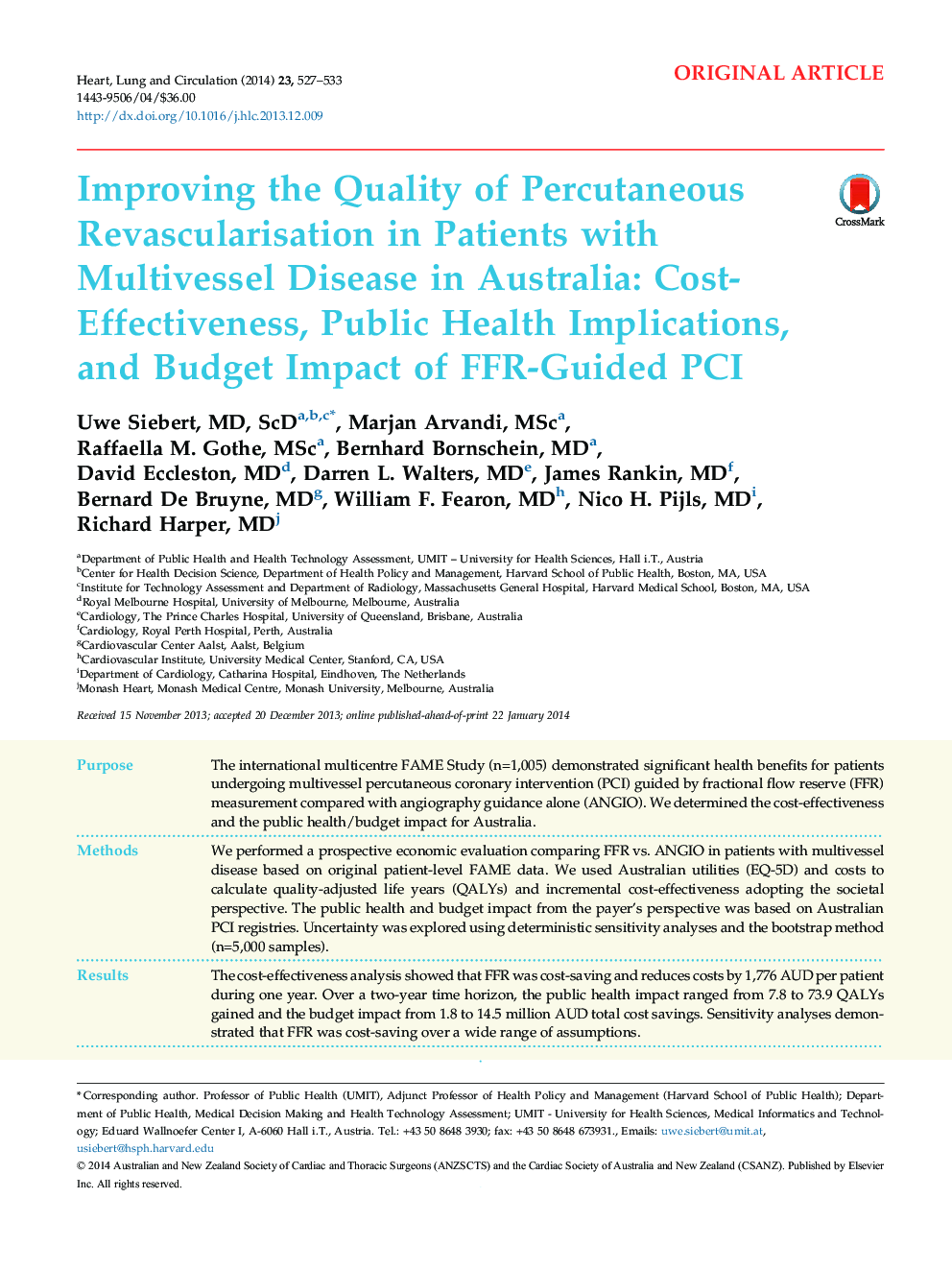| Article ID | Journal | Published Year | Pages | File Type |
|---|---|---|---|---|
| 2918040 | Heart, Lung and Circulation | 2014 | 7 Pages |
PurposeThe international multicentre FAME Study (n=1,005) demonstrated significant health benefits for patients undergoing multivessel percutaneous coronary intervention (PCI) guided by fractional flow reserve (FFR) measurement compared with angiography guidance alone (ANGIO). We determined the cost-effectiveness and the public health/budget impact for Australia.MethodsWe performed a prospective economic evaluation comparing FFR vs. ANGIO in patients with multivessel disease based on original patient-level FAME data. We used Australian utilities (EQ-5D) and costs to calculate quality-adjusted life years (QALYs) and incremental cost-effectiveness adopting the societal perspective. The public health and budget impact from the payer's perspective was based on Australian PCI registries. Uncertainty was explored using deterministic sensitivity analyses and the bootstrap method (n=5,000 samples).ResultsThe cost-effectiveness analysis showed that FFR was cost-saving and reduces costs by 1,776 AUD per patient during one year. Over a two-year time horizon, the public health impact ranged from 7.8 to 73.9 QALYs gained and the budget impact from 1.8 to 14.5 million AUD total cost savings. Sensitivity analyses demonstrated that FFR was cost-saving over a wide range of assumptions.ConclusionsFFR-guided PCI in patients with multivessel coronary disease substantially reduces cardiac events, improves QALYs and is cost-saving in the Australian health care system.
